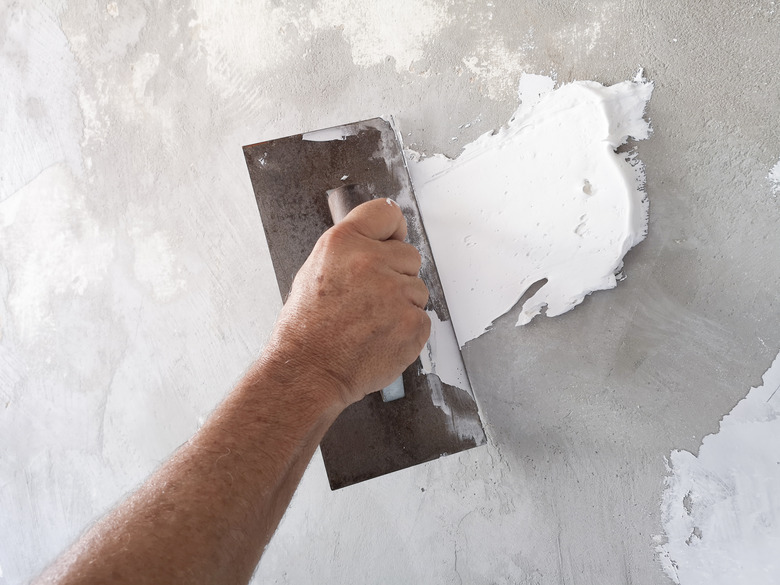How To Repair Plaster Chips On Corners, Edges, And Walls
We may receive a commission on purchases made from links.
Drywall is the number one interior wall covering in North America, and it assumed that status during the housing boom of the 1950s. Before that, plaster was king, so homes and buildings that predate the building boom are likely to have plaster walls, and it would be highly unusual if those walls hadn't chipped out over the years.
When repairing cracked plaster, you usually have to take steps to re-adhere the plaster to the wood lath behind it, and you can purchase a plaster repair kit that provides everything you need to do that. When you fix chipped wall corners and edges, the job is much easier because you don't need to worry about sticking the plaster to the lath. You do need to use an appropriate plaster patching compound, though.
Plaster Patching Compound Options
Plaster Patching Compound Options
When repairing chips on plaster walls, you don't have to look hard for a suitable patching compound because plain old drywall joint compound does the job very well. For small chips, you might even be able to do the repair with spackling compound or even white toothpaste. Of course, if you prefer to buy a patching compound that sets harder, such as plaster of Paris, so much the better.
When repairing chipped corners, a nonsetting material, like regular joint compound or spackling compound, isn't durable enough for the job. In this case, you need the plaster of Paris or something similar. Setting-type joint compound, otherwise known as "hot mud," will also make a suitable repair.
Repairing a Chipped Plaster Corner
Repairing a Chipped Plaster Corner
The procedure for repairing a chip out in the corner of a plaster wall basically involves troweling on a setting material, but there's a problem. Unless you mix the material so stiff that it's almost unworkable, it will probably sag before it sets. There's an easy way to prevent this.
Use a patching compound that comes as a powder and mix it with water to a consistency just stiff enough so it stays on your trowel when you turn the trowel upside down. Cover the chipped out plaster with a coat of PVA drywall primer to ensure the new plaster sticks and trowel on the new plaster when the primer dries. Immediately cover the repair with masking tape. It will hold the repair in place until the plaster sets.
Repairing Chips on Flat Walls
Repairing Chips on Flat Walls
A chip on a flat wall is easy to fix as long as it isn't accompanied by a crack. If it is, you need to reattach the plaster to the lath, or it will quickly reappear. If the chips are very small, you can use an old renter's trick, which is to fill them with white toothpaste. This repair only works on white walls, and it won't be durable, but if the chip is small, it doesn't need to be.
Drywall joint compound is a better material for repairing chips. Just trowel it on, scrape it flat, trowel on a second coat if necessary, and sand the repair flat when the compound dries. If painting is necessary, apply a coat of PVA primer to the repair before you paint.
